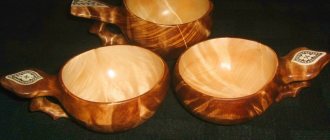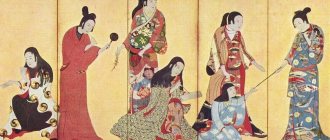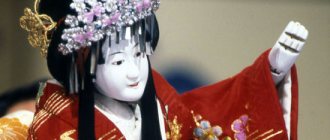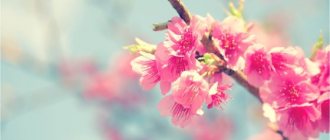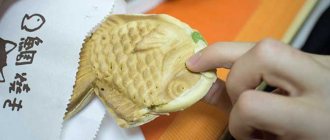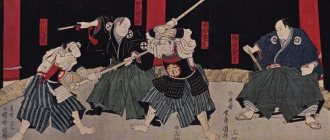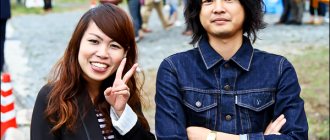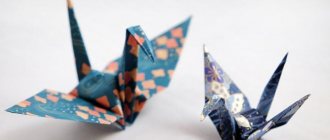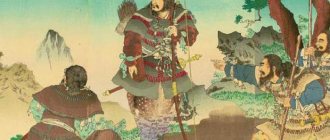Pioneers of performance art. What Japanese Art of the 1950s Means Today
Documenting the creative process of Akira Kanayama and Kazuo Shiraga
Superflat only took shape in the 2000s. But artistic events that were significant for world art began in Japan much earlier - and even earlier than in the West.
The performative turn in art occurred at the turn of the 60s and 70s of the last century. In Japan, performance art appeared in the fifties.
For the first time, the Gutai Group has shifted its focus from creating self-sufficient objects to the process of producing them. From here it’s one step away from abandoning the art object in favor of an ephemeral event.
Although individual artists from Gutai (there were 59 of them in total over twenty years) actively existed in the international context, the understanding of Japanese post-war art as a collective activity in general began in the West only recently. The boom came in 2013: several exhibitions in small galleries in New York and Los Angeles, “Tokyo 1955–1970: The New Avant-Garde” at MoMA and a large-scale historical retrospective “Gutai: Splendid Playground” at the Guggenheim Museum. Moscow's import of Japanese art seems to be an almost belated continuation of this trend.
Sadamasa Motonaga. Work (Water) at the Guggenheim Museum
It's amazing how contemporary these retrospective exhibitions look. For example, the central object of the exhibition at the Guggenheim Museum is a reconstruction of Work (Water) by Sadamasa Motonaga, in which the levels of the museum rotunda are connected by polyethylene tubes with colored water. They resemble brush strokes that have been torn from the canvas, and exemplify Gutai's central focus on "concreteness" (as the band's name translates from Japanese), the materiality of the objects with which the artist works.
Many Gutai participants received an education related to classical nihonga painting, many are biographically tied to the religious context of Zen Buddhism, to its characteristic Japanese calligraphy. All of them found a new, procedural or participatory approach to ancient traditions. Kazuo Shiraga recorded videos of himself painting his monochromes, anticipating Rauschenberg, with his feet, and even created paintings in public.
Minoru Yoshida transformed flowers from Japanese prints into psychedelic objects - an example of this is Bisexual Flower, one of the first kinetic (moving) sculptures in the world.
The curators of the exhibition at the Guggenheim Museum talk about the political significance of these works:
“Gutai demonstrated the importance of free individual action, the subversion of spectatorial expectations, and even stupidity as ways to counter the social passivity and conformity that, over several decades, allowed a militaristic government to gain a critical mass of influence, invade China, and then join World War II.”
Swiss artist Louise Bonnet
The best contemporary artists in the world are therefore such that they challenge the classical schools of previous eras in the visual arts. Swiss artist Louise Bonnet, along with such famous surrealist artists as Wojciech Sydmak, Rafal Olbinski and Jim Warren, changes this style of avant-garde art almost beyond recognition.
Louise Bonnet was born in Geneva, where she graduated from the Higher School of Art and Design. In 2008, she began her creative career, while working as a designer-illustrator. Her first solo exhibition was held at the Subliminal Projects gallery in Los Angeles. All of Bonnet's works focus on the depiction of the human body with a special kind of extreme sexuality and physical exaggeration in the surreal subjects of her unusual paintings. The figures in her works have a distinct but contradictory line between beauty and ugliness, absurdity and physical reality, wrapped in the creative package of a great theatrical comedy.
Instagram of artist Louise Bonnet
“Red Mourner”, 2021, oil on linen
“Orange Interior”, 2021, oil on linen
“Pink Blanket”, 2021, oil on linen
“Cyclops”, 2021, oil on linen
Good and wise. Why did artists leave Japan for America in the 1960s?
Gutai was the exception to the rule in post-war Japan. Avant-garde groups remained marginal, the art world was strictly hierarchical. The main path to recognition was participation in competitions held by recognized associations of classical artists. Therefore, many preferred to go to the West and integrate into the English-language art system.
It was especially difficult for women. Even in the progressive Gutai, the share of their presence did not reach even a fifth. What can we say about traditional institutions, access to which required special education. By the sixties, girls had already acquired the right to it, but training in art (unless it was a decorative one, which was part of the skill set of ryosai kenbo
- a good wife and wise mother) was a socially disapproved activity.
Yoko Ono. Cut Piece
The story of the emigration of five powerful Japanese artists from Tokyo to the States became the topic of Midori Yoshimoto’s study “Into Performance: Japanese Women Artists in New York.” Yayoi Kusama, Takako Saito, Mieko Shiomi and Shigeko Kubota decided to move to New York at the start of their careers and worked there, including on modernizing the traditions of Japanese art. Only Yoko Ono grew up in the United States - but she, too, deliberately refused to return to Japan, having become disillusioned with the artistic hierarchy of Tokyo during a short stay in 1962-1964.
Ono became the most famous of these five - not only as the wife of John Lennon, but also as the author of proto-feminist performances dedicated to the objectification of the female body. There are obvious parallels between Ono's Cut Piece, in which viewers could cut off pieces of the artist's clothing, and Marina Abramovic's Ri.
Japanese classical painting: the most famous names
Japanese classical painting has a long and interesting history.
The visual arts of Japan are presented in different styles and genres, each of which is unique in its own way. Ancient painted figurines and geometric motifs found on bronze dotaku bells and pottery shards date back to 300 AD. Buddhist orientation of art
The art of wall painting was quite well developed in Japan; in the 6th century, images on the theme of Buddhist philosophy were especially popular. At that time, large temples were being built in the country, and their walls were everywhere decorated with frescoes painted based on scenes from Buddhist myths and legends. Ancient examples of wall paintings are still preserved in the Horyuji Temple near the Japanese city of Nara. Horyuji murals depict scenes from the life of Buddha and other gods. The artistic style of these murals is very close to the pictorial concept popular in China during the Song Dynasty.
The painting style of the Tang Dynasty gained particular popularity in the middle of the Nara period. The frescoes discovered in the Takamatsuzuka tomb date back to around the 7th century AD from this period. The artistic technique, formed under the influence of the Tang dynasty, subsequently formed the basis of the painting genre of kara-e. This genre maintained its popularity until the appearance of the first works in the Yamato-e style. Most of the frescoes and paintings are by unknown authors; today, many of the works from that period are kept in the Sesoin treasury.
The growing influence of new Buddhist schools such as Tendai influenced the broad religious focus of Japanese fine art in the 8th and 9th centuries. In the 10th century, which saw a special progress in Japanese Buddhism, the genre of raigozu, “welcome paintings” appeared, which depicted the arrival of Buddha in the Western Paradise. Early examples of raigozu, dating back to 1053, can be seen at the Bedo-in Temple, which survives in the city of Uji, Kyoto Prefecture.
Changing styles
In the middle of the Heian period, the Chinese kara-e style was replaced by the Yamato-e genre, which for a long time became one of the most popular and sought-after genres of Japanese painting. The new pictorial style was mainly used in painting folding screens and sliding doors. Over time, yamato-e also moved to horizontal emakimono scrolls. Artists who worked in the emaki genre tried to convey in their works all the emotionality of the chosen plot. The Genji Monogatari Scroll consisted of several episodes strung together, with artists of the time using quick brush strokes and bright, expressive colors.
E-maki is one of the oldest and most prominent examples of otoko-e, a genre of male portraiture. Women's portraits are classified as a separate genre, onna-e. Between these genres, in fact, just like between men and women, quite significant differences are visible. The onna-e style is colorfully represented in the design of the Tale of Genji, where the main themes of the drawings are romantic subjects and scenes from court life. The male otoko-e style is primarily an artistic depiction of historical battles and other important events in the life of the empire.
The classical Japanese art school has become fertile ground for the development and promotion of the ideas of contemporary art in Japan, in which the influence of pop culture and anime can be clearly seen. One of the most famous Japanese artists of our time can be called Takashi Murakami, whose work is dedicated to depicting scenes from Japanese life in the post-war period and the concept of the maximum fusion of fine art and the mainstream.
Among the famous Japanese artists of the classical school we can name the following.
Tense Xubun
Syubun worked at the beginning of the 15th century, devoting a lot of time to studying the works of Chinese masters of the Song Dynasty; this man stood at the origins of the Japanese visual genre. Shubun is considered the founder of the sumi-e style, monochrome ink painting. He made a lot of efforts to popularize the new genre, turning it into one of the leading areas of Japanese painting. Subun's students were many artists who later became famous, including Sesshu and the founder of the famous art school, Kano Masanobu. Many landscapes were attributed to Xubun, but his most famous work is traditionally considered “Reading in a Bamboo Grove.”
Ogata Korin (1658-1716)
Ogata Korin is one of the greatest artists in the history of Japanese painting, the founder and one of the brightest representatives of the rimpa artistic style. Korine boldly moved away from traditional stereotypes in his works, forming his own style, the main characteristics of which were small forms and bright impressionism of the plot. Korin is known for his special skill in depicting nature and working with abstract color compositions. “Plum Blossom Red and White” is one of Ogata Korin’s most famous works; his paintings “Chrysanthemums”, “Waves of Matsushima” and a number of others are also known.
Hasegawa Tohaku (1539-1610)
Tohaku is the founder of the Japanese Hasegawa school of art. The early period of Tohaku’s work was characterized by the influence of the famous school of Japanese painting, the School of Japanese Painting: Styles and Directions of Kano, but over time the artist formed his own unique style. In many ways, Tohaku’s work was influenced by the works of the recognized master Sesshu; Hosegawa even considered himself the fifth successor of this great master. Hasegawa Tohaku’s painting “Pines” has gained worldwide fame; his works “Maple”, “Pines and Flowering Plants” and others are also known.
Kano Eitoku (1543-1590)
The Kano school style dominated the visual arts of Japan for about four centuries, and Kano Eitoku is perhaps one of the most famous and prominent representatives of this art school. Eitoku was favored by the authorities, the patronage of aristocrats and wealthy patrons could not but contribute to the strengthening of his school and the popularity of the works of this, without a doubt, very talented artist. The eight-panel Cypress sliding screen, painted by Eitoku Kano, is a true masterpiece and a shining example of the scope and power of the Monoyama style. Other works by the master, such as “Birds and Trees of the Four Seasons”, “Chinese Lions”, “Hermits and a Fairy” and many others, look no less interesting.
Katsushika Hokusai (1760-1849)
Hokusai is the greatest master of the ukiyo-e (Japanese woodcut) genre. Hokusai's work has received worldwide recognition, his fame in other countries is not comparable to the popularity of most Asian artists, his work “The Great Wave off Kanagawa” has become something of a calling card of Japanese fine art on the world art scene. On his creative path, Hokusai used more than thirty pseudonyms; after sixty, the artist devoted himself entirely to art, and it was this time that is considered the most fruitful period of his work. Hokusai's works influenced the work of Western masters of impressionism and the post-impressionist period, including the work of Renoir, Monet and van Gogh.
|
|
Japanese painting
Styles of Japanese painting: from origins to the present day
Japanese painting technique: ancient sumi-e
Japanese Traditional Painting: Nihonga Style
Article tags:
- japanese painting
On short legs. How to take Tadashi Suzuki's original acting training
In the case of Ono and Gutai, the methods and themes of their work, separated from the authors, became internationally significant. There are other forms of export - when the artist’s work is received with interest on the international stage, but the method itself is not borrowed due to its specificity. The most striking case is the acting training system of Tadashi Suzuki.
The Suzuki Theater is loved even in Russia - and this is not surprising. The last time he visited us was in 2021 with the play “The Trojan Women” based on the texts of Euripides, and in the 2000s he came several times with productions of Shakespeare and Chekhov. Suzuki transferred the action of the plays to the current Japanese context and offered non-obvious interpretations of the texts: he discovered anti-Semitism in Ivanov and compared it with the disdainful attitude of the Japanese towards the Chinese, and transferred the action of King Lear to a Japanese madhouse.
Suzuki built his system in opposition to the Russian theater school. At the end of the 19th century, during the so-called Meiji period, a modernizing imperial Japan experienced a rise in opposition movements. The result was a large-scale Westernization of a previously extremely closed culture. Among the imported forms was the Stanislavsky system, which still remains one of the main directorial methods in Japan (and in Russia).
Suzuki exercises
In the sixties, when Suzuki began his career, the thesis was increasingly spreading that, due to their physical characteristics, Japanese actors could not get used to the roles from Western texts that filled the then repertoire. The young director managed to offer the most convincing alternative.
Suzuki's system of exercises, called the grammar of the legs, includes dozens of ways to sit, even more to stand and walk.
His actors usually play barefoot and, due to the lowering of the center of gravity, appear as heavy as possible, tied to the ground. Suzuki teaches them and foreign performers his technique in the village of Toga, in ancient Japanese houses filled with modern equipment. His troupe gives only about 70 performances a year, and the rest of the time they live, almost never leaving the village and having no time for personal matters - only work.
The center in Toga appeared in the seventies, it was designed at the request of the director by the world famous architect Arata Isozaka. Suzuki's system might seem patriarchal and conservative, but he himself talks about Toga in modern terms of decentralization. Back in the mid-2000s, Suzuki understood the importance of exporting art from the capital to the regions and organizing local production points. According to the director, Japan's theater map is in many ways similar to Russia's - the arts are concentrated in Tokyo and several smaller centers. The Russian theater could also use a company that regularly goes on tour to small towns and is based far from the capital.
SCOT Company Center in Toga
Online archive of 213,000 beautiful Japanese prints from the 1700s to the present day
Over time, women and actors began to be portrayed less. At the beginning of the 19th century, masters of color woodcuts Utagawa Hiroshige (1797-1858) and Katsushika Hokusai (1760-1849) made landscapes their main subject matter. Their works are universally recognized masterpieces of world engraving. If you've ever seen ukiyo-e, there's a good chance it was the work of Hiroshige and Hokusai. Thousands of digitized works by these artists can be found at Ukiyo-e.org, an archive of Japanese prints.
This bilingual English-Japanese site is the project of programmer and developer at Khan Academy John Resig. It turns out that Resing is a great connoisseur of Japanese prints. He launched the site in 2012 and now has more than 213,000 images from 24 museums, universities, libraries, auction houses and dealers around the world.
Ukiyo-e.org has a “search by image” function. You can upload your own image (if you have one) to find out who the author of the engraving is, what it is called and when it was created. You can also search for works by the name of the period (by year) and by the name of the artist. At the very bottom of the page there are works by contemporary authors who work in the “shin-hanga” and “sosaku hanga” directions. Notable among them is Tom Christensen, an engraver from Australia with Danish-German roots. Please note that in order for the image to open in a larger format, you need to double-click on it.
Susanoo kills the eight-headed serpent, Yoshitoshi Tsukioka, 1887
Susanoo or Takehaya Susanoo no Mikoto, standing on a rock with a sword in his hand and watching the dragon underwater. Utagawa Kuniyoshi, 1840
Susanoo kills the snake Yamata no Orochi, Utagawa Kuniteru, 1847-52
Amaterasu Omikami, the sun goddess, emerges from the cave where she spent a long time after a quarrel with her brother Susanoo, Tsukioka Yoshitoshi, 1839-1892
Onoe Kikugoro as a Ghost, Utagawa Kuniyoshi, 1836
Scene from the play about how Susanoo no Mikoto subdues monsters, Katsushika Hokki, 1851
Hell Demon Datsueba Dreams of Petitioners, Utagawa Kuniyoshi, 1849
Ghost Kannon saves Hitosuya's daughter, who is being strangled by her mother. Series “24 Patterns of Japanese Filial Piety”, Utagawa Kuniyoshi, 1842-43
For sake: a triptych featuring a group of human-looking foxes having a wild party under the cover of darkness. Utagawa Kuniyoshi, 19th century
Mitsukuni (Otaketaro) challenges the skeleton ghost at Soma Castle. Utagawa Kuniyoshi, 1845
Basket of Memories, Yoshitoshi Tsukioka, 1902
"South wind. Clear Day", or "Red Fuji" (from the series "Thirty-six views of Fuji"), Katsushika Hokusai, 1830-31
Fuji - The Great Wave, Katsushika Hokusai
Flower Garden at Senso-ji, Utagawa Hiroshige, 1863
Actor Jitsukoa Enzeburu as tobacco merchant Senkichi, Utagawa Hiroshige, 1854
Woman standing on a plank bridge (from the series “Comparison of Modern Beauties”), Utagawa Yoshikazu, 1853
Courtesan with bedding, Torii Kiyomine, Edo period
Bridge in the Snow, Watanabe Shotei, 1910
Twenty views of Tokyo, Kawase Hasui, 1925-30
Portrait of sumo wrestler Hiodoshi Rikiya, Utagawa Kuniyasu, 1825
Combing Hair, Torii Kotondo, 1929
Version of the scene by the Yoshino River in the play "Imoseyama", Katsukawa Shunsho, 1790
Shinano Province: Moon Reflected in Rice Fields, Utagawa Hiroshige, 1853
From the series “Famous Places in the Capital,” Hasegawa Sadanobu, 1870–71
See also:
- “One Hundred Views of the Moon” – the greatest prints of the last ukiyo-e master Tsukioka Yoshitoshi
- Hundreds of ukiyo-e prints from Japanese masters of the 19th century have been made publicly available
September 20, 2017
Flower paths. What resource has modern theater discovered in the noh and kabuki systems?
The Suzuki method grows out of two ancient Japanese traditions - Kabuki. It's not just that these types of theater are often characterized as walking art, but also the more obvious details. Suzuki often follows the rule that all roles are played by men and uses characteristic spatial solutions, for example, the hanamichi (“path of flowers”) of the kabuki example—a platform extending from the stage into the depths of the auditorium. He also uses very recognizable symbols like flowers and scrolls.
Of course, in the global world there is no talk about the privilege of the Japanese to use their national forms.
The theater of one of the most significant directors of our time, the American Robert Wilson, was built on borrowings from it.
He not only uses masks and makeup that remind the mass audience of Japan, but also borrows methods of acting based on maximum slow motion and self-sufficient expressiveness of gesture. Combining traditional and ritualistic forms with cutting-edge lighting scores and minimalist music (one of Wilson's most famous works is the production of Philip Glass's Einstein on the Beach), Wilson essentially produces the synthesis of origins and relevance that much contemporary art strives for.
Robert Wilson. "Einstein on the Beach"
From noh and kabuki grew one of the pillars of modern dance - butoh, literally translated - dance of darkness. Created in 1959 by choreographers Kazuo Ono and Tatsumi Hijikata, who also relied on a low center of gravity and concentration on the legs, butoh represented the translation of reflections on traumatic war experiences into the physical dimension.
“They showed a body that was sick, decaying, even monstrous, monstrous. <…> The movements are either slow, or deliberately sharp, explosive. For this, a special technique is used, when the movement is carried out as if without using the main muscles, due to the bone levers of the skeleton,” dance historian Irina Sirotkina writes butoh into the history of liberation of the body, connecting it with the departure from ballet normativity. She compares butoh with the practices of dancers and choreographers of the early 20th century - Isadora Duncan, Martha Graham, Mary Wigman, and talks about the influence on later “postmodern” dance.
A fragment of a dance by Katsura Kan, a modern successor to the butoh tradition
Today, butoh in its original form is no longer an avant-garde practice, but a historical reconstruction.
However, the vocabulary of movement developed by Ono, Hijikata and their followers remains a valuable resource for modern choreographers. In the West it is used by Dimitris Papaioannou, Anton Adasinsky and even in the video for “Belong To The World” by The Weekend. In Japan, the continuer of the butoh tradition is, for example, Saburo Teshigawara, who will come to Russia in October. Although he himself denies any parallels with the dance of darkness, critics find quite recognizable signs: a seemingly boneless body, fragility, and silent steps. True, they are already placed in the context of postmodern choreography - with its high tempo, jogging, work with post-industrial noise music.
Saburo Teshigawara. Metamorphosis
Russian artist Valery Koshlyakov
Valery Koshlyakov was born on June 21, 1962 in the small town of Salsk, Russia (RSFSR). At the moment, the contemporary Russian artist lives and works both in Moscow and Paris. He is one of the most expensive artists in the Russian Federation, and deservedly finishes our top ten “Best Contemporary Artists in the World” rating. His personal exhibitions were opened both at the Tretyakov Gallery and at the Chateau de Franconville near Paris. Koshlyakov paints his paintings not only on canvas, but also on cardboard, as well as on glued mounting tape. The canvases are made in a soft surreal style and echo the works of the impressionist artist Jeremy Mann in their reproduction technique. Koshlyakov’s Russian painting touches on various topics, from the symbolism of the USSR to ancient mythology. The great artist uses recognizable blurry strokes and smudges of paint in his unusual paintings.
“Disappearance of the image”, 2011, canvas, tempera, acrylic, collage
“City Gates” from the “Empire” series, 2004, acrylic on canvas, mixed media
“Polyhymnia”, 2008-2013, acrylic on canvas, collage
“Coat of Arms”, 2006, oil, canvas
Locally global. How is contemporary Japanese art similar to Western art?
The works of Teshigawara and many of his colleagues fit seamlessly into the programs of the best Western contemporary dance festivals. If you quickly look at the descriptions of performances and performances that were shown at Festival/Tokyo - the largest annual show of Japanese theater, it will be difficult to notice fundamental differences from European trends.
One of the central themes is site-specificity - Japanese artists explore the spaces of Tokyo ranging from clumps of capitalism in the form of skyscrapers to marginal areas of otaku concentration.
Another topic is the elaboration of intergenerational misunderstanding, theater as a place of live meeting and organized communication of people of different ages. Projects dedicated to her by Toshiki Okada and Akira Tanayama were brought to Vienna for several years in a row to one of the key European festivals of performative arts. By the end of the 2000s, there was nothing new in bringing documentary materials and personal stories to the stage, but the curator of the Vienna Festival presented these projects to the public as an opportunity for live, targeted contact with another culture.
Another main line is working through traumatic experiences. For the Japanese, it is associated not with the Gulag or the Holocaust, but with the bombing of Hiroshima and Nagasaki. The theater refers to it constantly, but the most powerful statement about atomic explosions as the moment of genesis of all modern Japanese culture still belongs to Takashi Murakami.
for the exhibition “Little Boy: The Arts of Japan's Exploding Subculture”
“Little Boy: The Arts of Japan's Exploding Subculture” is the title of his curatorial project, shown in New York in 2005. “Little Boy” - “baby” in Russian - is the name of one of the bombs dropped on Japan in 1945. Collecting hundreds of manga comics from leading illustrators, distinctive vintage toys, and memorabilia based on famous anime - from Godzilla to Hello Kitty, Murakami increased the concentration of cute - kawaii - in the museum space to the limit. At the same time, he launched a selection of animations in which the central images were pictures of explosions, bare earth, and destroyed cities.
This contrast became the first large-scale statement about the infantilization of Japanese culture as a way to cope with post-traumatic stress disorder.
Now this conclusion seems obvious. Inuhiko Yomota's academic research on kawaii is based on it.
There are also later traumatic triggers. The most important are the events of March 11, 2011, the earthquake and tsunami that led to a major accident at the Fukushima nuclear power plant. At Festival/Tokyo 2018, an entire program of six performances was dedicated to understanding the consequences of a natural and technological disaster; they also became the theme for one of the works presented at Solyanka. This example clearly shows that the arsenal of critical methods in Western and Japanese art is not fundamentally different. Haruyuki Ishii creates an installation of three televisions that play high-tempo, looped footage from television programs about the earthquake on a loop.
“The work is made up of 111 videos that the artist watched daily on the news until the moment when everything he saw began to be perceived as fiction,” the curators explain. "New Japan" is a striking example of how art does not resist interpretation based on national myths, but at the same time a critical eye reveals that the same interpretation could be relevant to art of any origin. The curators discuss contemplation as the basis of Japanese tradition, drawing on quotes from Lao Tzu. At the same time, leaving aside, as it were, almost all contemporary art is focused on the “observer effect” (that’s the name of the exhibition) - be it in the form of creating new contexts for the perception of familiar phenomena or in raising the question of the possibility of adequate perception as such.
Imagined Communities is another work by video artist Haruyuki Ishii
Game
However, one should not think that Japan in the 2010s represents a concentration of progressiveness.
The habits of good old traditionalism and love for Orientalist exoticism have not yet been overcome. “Theater of Virgins” is the title of a rather admiring article about the Japanese Takarazuka Theater in the Russian conservative magazine PTZh. Takarazuka appeared at the end of the 19th century as a business project to attract tourists to the remote city of the same name, which accidentally became the terminus of a private railway. Only unmarried girls perform in the theater, who, according to the railroad owner’s plan, were supposed to attract male spectators to the city. Today, Takarazuka functions like an industry - with its own TV channel, a busy concert program, even a local amusement park. But only unmarried girls still have the right to be in the troupe - let’s hope that at least they don’t check their virginity.
However, Takarazuka pales in comparison to the Toji Deluxe club in Kyoto, which the Japanese also call a theater. They show a completely wild, judging by the description of New Yorker columnist Ian Buruma, striptease show: several naked girls on stage turn the demonstration of their genitals into a public ritual.
Like many artistic practices, this show is based on ancient legends (with the help of a candle and a magnifying glass, men in the audience could take turns exploring the “secrets of the mother goddess Amaterasu”), and the author himself was reminded of the Noh tradition.
We’ll leave the search for Western analogues for “Takarazuki” and Toji to the reader - they are not difficult to find. Let us only note that a significant part of contemporary art is aimed at combating such practices of oppression - both Western and Japanese, ranging from superflat to butoh dance.

